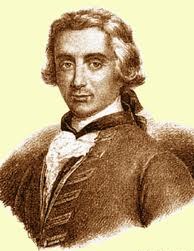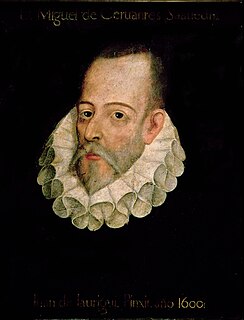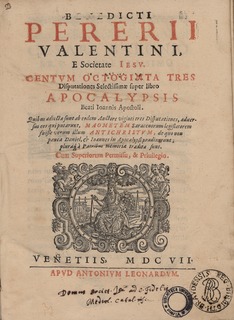 W
WJerónimo de Alcalá Yáñez y Rivera was a Spanish physician and writer. Most of his works were published after 1615.
 W
WBernardo de Alderete or Aldrete (1560–1641) was a Spanish erudite and writer. His main work is Del origen y principio de la lengua castellana about the origins of Spanish language.
 W
WAna de Jesús, translated into English as Anne of Jesus, was a Spanish Discalced Carmelite nun and writer. She was a close companion of Teresa of Avila, foundress of the Carmelite reform and served to establish new monasteries of the Order throughout Europe. Known as a mystic and for her writings on prayer, she has been declared Venerable by the Catholic Church.
 W
WVicente Bacallar y Sanna, 1st Marquess of San Felipe, later italianized into Vincenzo Bacallar Sanna, 6 February 1669 – The Hague (Netherlands), 11 June 1726). He was a Sardinian nobleman, military officer, linguist, historian, politician and ambassador of the Spanish Empire. He was born to a noble Sardinian family when the kingdom of Sardinia was part of the Spanish crown.
 W
WNicolás de Cardona was a Spanish entrepreneur and adventurer with residence in Seville, who was involved in the exploration of the Western coast of the North American continent
 W
WTomás de Cardona, a native of Venice and living in Seville, was a rich explorer, trader, and teacher of Spanish royal palace from the 17th century, who invested a fortune in a company to exploit the pearl banks in California.
 W
WMiguel de Cervantes Saavedra was a Spanish writer widely regarded as the greatest writer in the Spanish language, and one of the world's pre-eminent novelists. He is best known for his novel Don Quixote, a work often cited as both the first modern novel, and one of the pinnacles of literature.
 W
WPedro Cubero Sebastián was a Spanish priest, best known for his eastwards travel around the world from 1670 to 1679. Taking in account his world circumnavigation and his journeys across Europe he was undoubtedly one of the most widely traveled men in his time.
 W
WBaltasar Gracián y Morales, S.J., better known as Baltasar Gracián, was a Spanish Jesuit and baroque prose writer and philosopher. He was born in Belmonte, near Calatayud (Aragon). His writings were lauded by Schopenhauer and Nietzsche.
 W
WAntonio de Herrera y Tordesillas was a chronicler, historian, and writer of the Spanish Golden Age, author of Historia general de los hechos de los castellanos en las Islas y Tierra Firme del mar Océano que llaman Indias Occidentales, better known in Spanish as Décadas and considered one of the best works written on the conquest of the Americas. It is worth noting that Herrera never visited or lived in any part of the Americas. Therefore his work was largely conjectural.
 W
WJuan Mateos was a horseback hunter and the principal arbalist of Philip IV of Spain. In 1634, he authored Origen y dignidad de la caça, a hunting treatise dedicated to the Count-Duke of Olivares. In his dedication he said, "I write solely what I have done, and what I have seen; and what I have seen, do."
 W
WMiguel de Molinos was a Spanish mystic, the chief representative of the religious revival known as Quietism.
 W
WUrsula Micaela Morata was a nun, mystic, and founder of the convent of the Capuchin Poor Clares in Alicante, Spain.
 W
WPedro Antonio de Aragón was a Spanish nobleman, military figure and politician who served under Kings Philip IV and Charles II of Spain. He was the brother of Cardinal Pascual de Aragón, Viceroy of Naples, 1664–1666. the son of Enrique Ramón Folch de Cardona y Córdoba.
 W
WJosé Pellicer de Ossau y Tovar (1602-1679) was a Spanish publicist for Gaspar de Guzmán, Count-Duke of Olivares, poet, genealogist, and historian of Castile and Aragon.
 W
WBenedict Pereira was a Spanish Jesuit philosopher, theologian, and exegete.
 W
WFrancisco Gómez de Quevedo y Santibáñez Villegas, KOS was a Spanish nobleman, politician and writer of the Baroque era. Along with his lifelong rival, Luis de Góngora, Quevedo was one of the most prominent Spanish poets of the age. His style is characterized by what was called conceptismo. This style existed in stark contrast to Góngora's culteranismo.
 W
WPedro de Ribadeneira S.J. was a Spanish hagiographer, Jesuit priest, companion of Ignatius of Loyola, and a Spanish Golden Age ascetic writer.
 W
WAgustín de Rojas Villandrando was a Spanish writer and actor.
 W
WCristóbal de Torres y Motones, OP was a Spanish-born prelate of the Catholic Church in New Spain. A member of the Dominican Order, in 1635 he was appointed archbishop of the Archdiocese of Santafé en Nueva Granada. There, he was one of the first bishops in New Spain to admit indigenous people to communion, and he later founded Del Rosario University in Bogotá.
 W
WGabriel Vasquez was a Spanish Jesuit theologian.
 W
WLope Félix de Vega Carpio was a Spanish playwright, poet, novelist and marine. He was one of the key figures in the Spanish Golden Age of Baroque literature. His reputation in the world of Spanish literature is second only to that of Miguel de Cervantes, while the sheer volume of his literary output is unequalled, making him one of the most prolific authors in the history of literature. He was nicknamed "The Phoenix of Wits" and "Monster of Nature" by Cervantes because of his prolific nature.